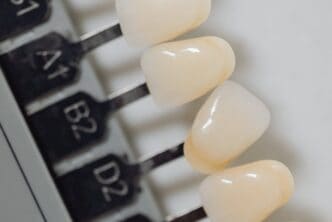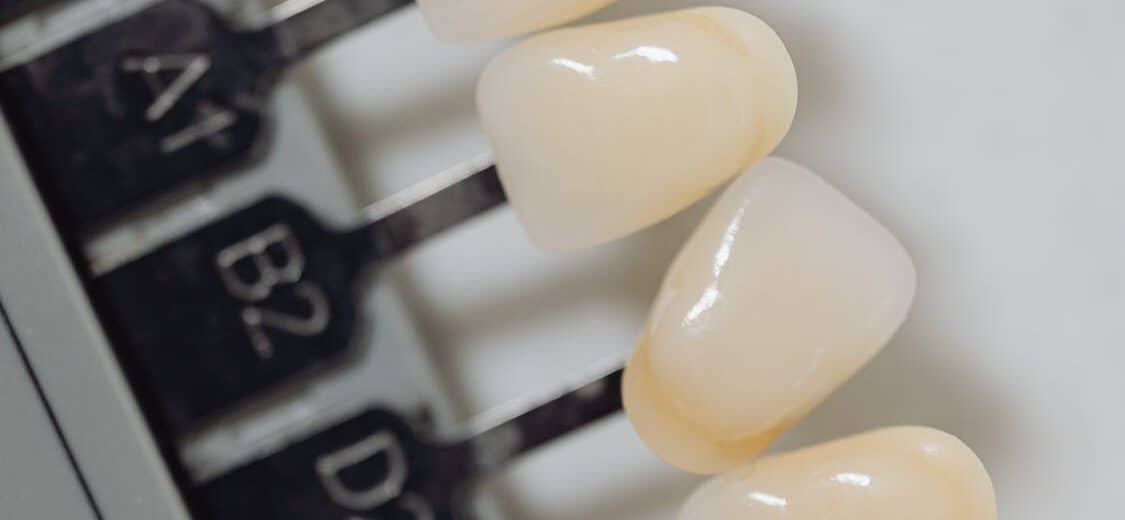Veneers are thin shells made to fit over the front surface of teeth, often used to mask chips, gaps, or staining. Many people ask whether veneers are the right move for them, and the answer hinges on a mix of dental health, cosmetic aims, and daily habits.
This article lays out clear signs that point toward being a good candidate, along with red flags that suggest a different path. Read through the sections to gauge where you stand and what steps the dentist will likely take.
What Veneers Are And How They Work
Veneers are typically composed of porcelain or composite resin that bonds to a tooth’s front side and changes its color, shape, or alignment. Porcelain veneers resist stains and mimic enamel’s light-reflecting properties, while composite bonding tends to cost less and can be repaired more easily.
The process often involves minor enamel removal, impressions, and a bonding step that secures the shell in place. Outcomes can be highly natural when the treatment plan accounts for bite, gum tone, and facial proportions.
If you’re hoping to enhance your smile without overspending, it’s worth exploring affordable dental veneers that balance quality materials with reasonable cost.
Dental Health Requirements
Good candidates usually have healthy teeth free of active decay and untreated infection that might compromise a restoration. If cavities or failing fillings exist, those issues are typically addressed prior to placing veneers to protect the long-term integrity of the work.
Teeth with extensive structural damage might need crowns rather than thin shells, since the latter require a stable substrate for bonding. A thorough exam and x-rays give the dentist the data needed to recommend an appropriate restorative path.
Cosmetic Goals And Realistic Expectations
People who seek veneers often want a dramatic smile improvement, such as whiter teeth, corrected minor misalignments, or uniform sizing. It helps to have a clear idea of which defects matter most, and to recognize that veneers alter appearance permanently in most cases.
Photographs and trial mock-ups assist in visualizing outcomes and align goals with what is feasible. Dentists will guide on shade selection, shape, and how many teeth to treat so the result matches facial features.
Tooth Structure And Enamel Thickness
Sufficient enamel is key for predictable bonding strength, because adhesive systems attach best to enamel rather than dentin. Teeth with thin enamel or teeth worn from grinding might require alternative approaches or additional preparation to achieve durable adhesion.
In some cases, minimal-prep or “no-prep” veneers work well, while other mouths need more reduction to create space for material. A careful assessment of tooth anatomy helps avoid over-preparation and promotes a long-lasting outcome.
Gum Health And Periodontal Status
Healthy gums create a stable frame for veneers and help hide any junction between tooth and restoration, which keeps the smile seamless. Active gum disease increases risk for failure, since inflammation can lead to bone loss and retreatment needs down the line.
If periodontal problems exist, treating them first sets the stage for cosmetic work and improves overall prognosis. Gingival contours may be adjusted before or during restorations to achieve an even gum line that complements the new teeth.
Habits That Affect Suitability
Daily behaviors such as teeth grinding, nail biting, or using teeth as tools can place heavy forces on veneers and speed up chipping or detachment. For those who grind at night, a protective occlusal guard is often recommended to shield new restorations from excessive wear.
Smoking and heavy consumption of staining agents can also affect bonding and shade longevity, so lifestyle factors are part of the clinical discussion. Minor habit changes and protective measures often make a candidate far better prepared for long-term success.
Commitment To Care And Follow-Up

Veneers require routine maintenance that includes good oral hygiene, periodic dental visits, and attention to early signs of trouble such as sensitivity or looseness. Home care with brushing and interdental cleaning reduces plaque accumulation, which in turn preserves both gum health and the veneers’ margins.
Regular exams allow the team to catch small issues before they become major repairs, which saves money and heartache over the years. Patients who are willing to keep appointments and follow aftercare guidelines generally see superior longevity from their restorations.
Alternatives To Veneers
Not every smile problem needs a shell; orthodontic movement, bonding, whitening, or crowns may reach the desired result without the same trade-offs. Teeth that are heavily restored or severely misaligned might be better served by crowns or orthodontic therapy that address function and form together.
Whitening can often fix intrinsic staining when the discoloration is not structural, and composite bonding can patch chips with less enamel removal. Discussing options makes clear the pros and cons so the chosen route fits appearance goals, dental health, and budget.
The Consultation And Treatment Path
At the initial visit, the dentist reviews medical and dental history, performs a clinical exam, and likely takes radiographs or scans to map internal structures. Models or digital mock-ups help preview changes and set measurable objectives, while consent includes discussion of risks, benefits, and expected lifespan of the restorations.
A phased approach often begins with treating infections or gum issues, then moves to provisional restorations that let patients try out a new look. Final placement occurs when both patient and clinician are satisfied that the plan meets aesthetic and functional aims.














